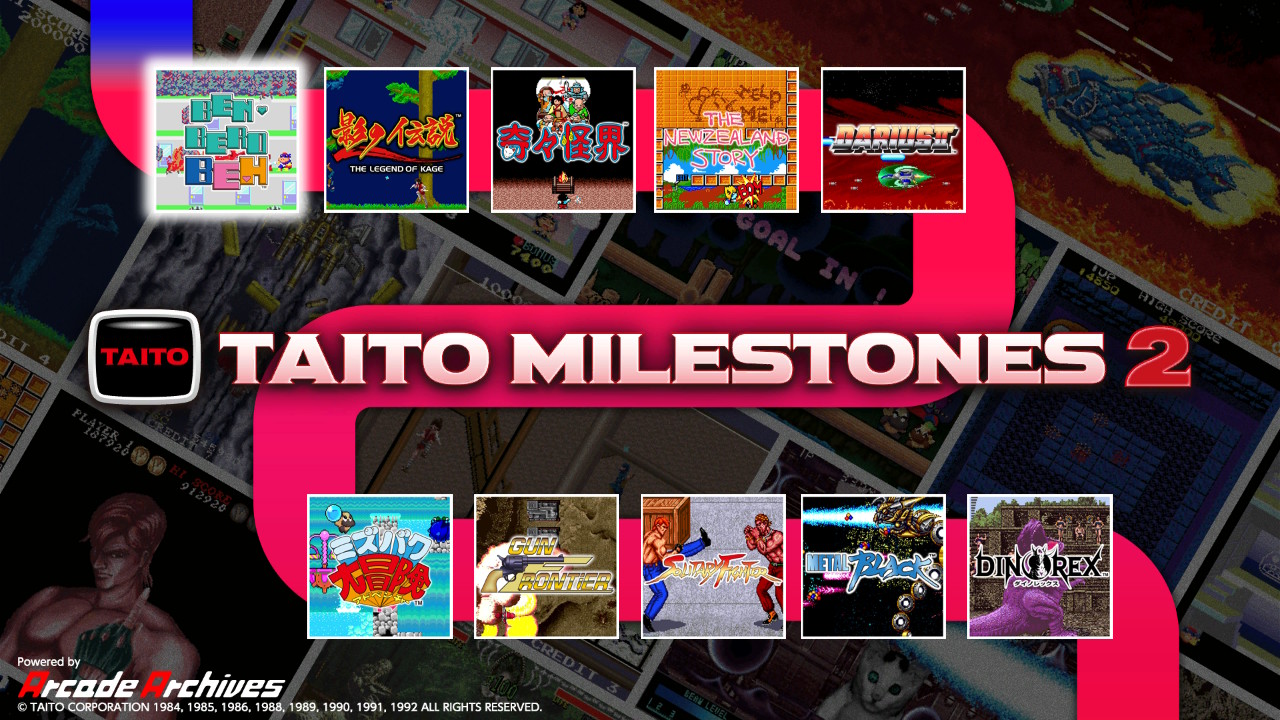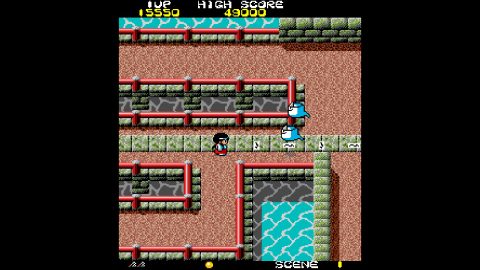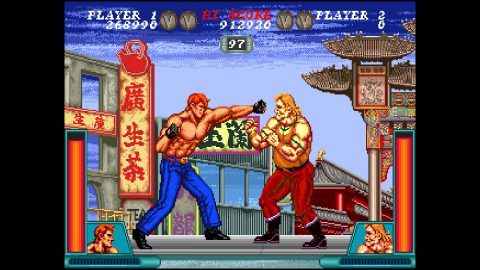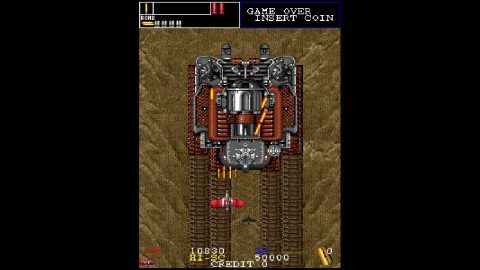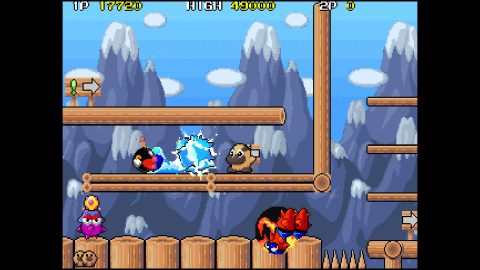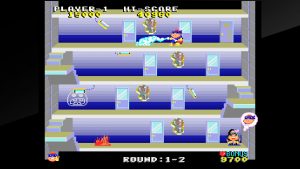- Taito Milestones
- Taito Milestones 2
- Taito Milestones 3
The first Taito Milestones compilation was a somewhat baffling collection of titles from the company’s output of the 1980s. Thankfully, this follow-up focuses on a wider era, delivering ten Taito games that do a better job of showing off a sampling of their extensive library.
Ben Bero Beh
The oldest game on the compilation, Ben Bero Beh puts you in the role of a fire fighting superhero, as he works his way from the top of a burning building to rescue a damsel in distress on the bottom floor. You are equipped with a firehouse, which can be aimed at different angles to take out fires from above or below. This comical game is fully of weird characters, including a few nabbed from other Taito games; conversely, a few characters from here appear on other Taito games, like the guy who swings out of doors and nabs you with his tongue, who pops up in The Fairyland Story. This is probably the weakest entry on Taito Memories 2 but remains an interesting curiosity just for its goofiness.
Play as a high-jumping, shuriken-tossing ninja as you go through four stages to rescue the princess. While more widely known for its dated NES port, this is actually a pretty impressive side-scroller considering it came out in 1985, the same year as the original Super Mario Bros.
The second in Taito’s long running aquatic wildlife shoot-em-up, originally developed for multiple monitors to allow for an enormous playing field. Darius already got a luxurious treatment in M2’s Darius Cozmic Collection, featuring several games in the series, including this one. However, that collection only had the two-screen version of Darius II, while this collection features the less common three-screen version. Outside of the added screen real estate, it’s the same game.
This overhead run-and-gun series, where you control a miko banishing evil spirits, is more widely known as Pocky & Rocky. This arcade game from 1986 isn’t quite as fancy as the SNES sequels (and its more recent modern update) but it’s still a solid, albeit incredibly difficult, experience.
Solitary Fighter
Violence Fight was originally released in 1989, being a versus fighter that predates Street Fighter II by a few years. Unlike Capcom’s game, you can move around the field, making it a little more like a super violent boxing match, except you can jump and kick. While the large character sprites impress, and it’s famous for its nonsensical “Sammy You!” quote on the victory screen, it’s a clunky, messy game. Taito created a sequel for the overseas market called Solitary Fighter, and this version here is the first time it’s seen a home port. This update adds in playable boss characters, bonus rounds, and audience members that join in the fight, including knife-wielding showgirls.
Known in English as Liquid Kids, you control a platypus named Hipopo, who attacks by tossing a water-filled bubble, which will freeze enemies with its water. Basically, if you’d evolve Bubble Bobble from being a single-screen action game to a side-scrolling platform, you’d probably get this underrated gem.
Another one of those cutesy platforms Taito was known for, here you control a funny looking kiwi named Tiki as he explores enormous levels, shooting enemies with his bow and arrow and hijacking balloons to fly around in.
An unusual wild west themed vertical shoot-em-up, where most of the ships are modeled after six shooter pistols. Some elements, particularly the bomb collection mechanic and the oblong-shaped bullets, later inspired Raizing games like Battle Garegga. While this predates the bullet hell shooters of the late 1990s, this is still a decent shooter with a cool vibe and a fantastic soundtrack.
A post-apocalyptic shoot-em-up where you can charge up a super megalaser and use it to perform lightning duels with the boss creatures. One of Taito’s best shoot-em-ups, with an impeccable vibe and memorably weird imagery.
A prehistoric dinosaur versus fighting game, similar to Primal Rage, though it predated it by a few years. Unfortunately its impact is ruined by the low color digitized dinosaur models and some truly ropey gameplay. However, it’s become appreciated by the fighting community just for how weird it is, and despite it being a pretty awful game, sure is a lot of fun to spectate.
Like the first Taito Milestones, the emulation is handled by Hamster, so these releases are basically the same as the Arcade Archives releases. Among the usual save state and visual tweak options, the rapid fire option is particularly useful for titles like Kiki Kaikai and Gun Frontier, which their original arcade releases lacked. What is missing is the ability to choose regional variations. This doesn’t matter for most of the games since the only difference is with the title screens. But Mizubaku Daibouken did have an English release and the included version does have some Japanese text, so it’s curious why it’s missing. But the Arcade Archives release also only has the Japanese version too, so at least this is consistent. Dino Rex also has some untranslated text.
Altogether, almost every game on Taito Milestones 2 is a classic, and even the ones that aren’t justify their presence by at least being pretty interesting. Taito has an amazing library and you could always pick plenty of noteworthy titles that are missing, but there does seem to be some reasons for that – Space Invaders, Darius, and the Ray’z games are featured in their own collections. While there’s certainly enough potential content for more volumes, this is still an essential release for 90s arcade fans.
